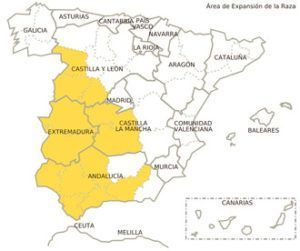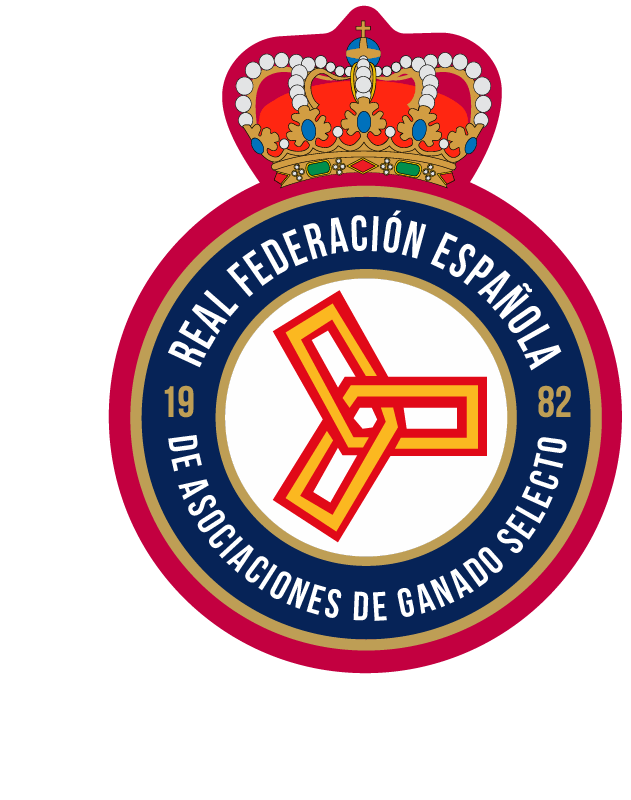GENERAL CHARACTERISTICS
It is a medium-sized animal, always with pigmented skin, with variations ranging from deep black to blond or red, with weak, rather scanty hair (interwoven varieties) or absent (hairless varieties). In good specimens, the back, back, rump and hams should be clearly muscled. Their limbs are thin, strong and with hooves of dark, uniform colouring, with some exceptions for specific varieties. A more complete and revised definition of the breed prototype is set out in the new Stud Book Regulations (BOE of 22 November 2007, Order APA/3376/2007).
PRODUCTION CHARACTERISTICS AND EXPLOITATION SYSTEMS
Since its origins, the Iberian pig breed has been linked to extensive production systems and, more specifically, to the use of the natural resources of the wooded pastureland. The union of this native breed and the pastureland form a binomial that could be considered a World Heritage Site.
Iberian pigs are adipogenic animals, with a tendency to store large lipid deposits, which infiltrate the muscle masses, giving rise to their characteristic fatty infiltration, not necessarily visible to the naked eye, which gives their meat an incomparable smoothness, texture and aroma. They are rather anabolic and late developing, with higher conversion rates than white breeds. They are also very hardy and able to adapt to the harsh environmental conditions of their traditional breeding area.
Among the quality products that come from the Iberian pig, the most important are the noble cured pieces: ham, shoulder and loin, and also highly appreciated for fresh consumption due to their juiciness are the loin head, the sirloin and shoulder, as well as other smaller pieces with suggestive names such as the secret, the feather, the castanet, the lizard or the surprise.
GEOGRAPHICAL DISTRIBUTION
Traditionally confined to the south-west of the Iberian Peninsula, in line with the area of wooded pastureland, its greatest representation is confined to the Spanish provinces of Salamanca, Caceres, Badajoz, Ciudad Real, Toledo, Seville, Córdoba, Huelva, Cádiz and Malaga.

INFORMATION
 Tell us about your characteristics and needs so that we can offer you the solution that best suits your context. Contact us if you have any clarifications or suggestions for products or services that you need.
Tell us about your characteristics and needs so that we can offer you the solution that best suits your context. Contact us if you have any clarifications or suggestions for products or services that you need.Presupuesto total: 543.404,60 euros. Cofinanciado UE al 80% por el Fondo Europeo Agrícola de Desarrollo Rural- FEADER y al 20% por el MAPA. La Dirección General de Desarrollo Rural, Innovación y Formación Agroalimetnaria (DGDRIFA) es la autoridad de gestión encargada de la aplicación de la ayuda FEADER y nacional correspondiente.
https://ec.europa.eu/info/eu-
Creación de una base y estructura de comercialización e internacionalización de material genético de razas puras españolas mediante análisis de la situación actual y elaboración de plan estratégico para la exportación. El objetivo es desarrollar un análisis estratégico de la internacionalización y desarrollo de estructura y protocolos de comercialización del material genético según demanda y requisitos de países objetivos para las razas participantes del proyecto y para el conjunto de la cabaña ganadera España. Organismo responsable de contenido: miembros del GO EXPORTGEN.
 Tell us about your characteristics and needs so that we can offer you the solution that best suits your context. Contact us if you have any clarifications or suggestions for products or services that you need.
Tell us about your characteristics and needs so that we can offer you the solution that best suits your context. Contact us if you have any clarifications or suggestions for products or services that you need.
Presupuesto total: 543.404,60 euros. Cofinanciado UE al 80% por el Fondo Europeo Agrícola de Desarrollo Rural- FEADER y al 20% por el MAPA. La Dirección General de Desarrollo Rural, Innovación y Formación Agroalimetnaria (DGDRIFA) es la autoridad de gestión encargada de la aplicación de la ayuda FEADER y nacional correspondiente.
https://ec.europa.eu/info/eu-
Creación de una base y estructura de comercialización e internacionalización de material genético de razas puras españolas mediante análisis de la situación actual y elaboración de plan estratégico para la exportación. El objetivo es desarrollar un análisis estratégico de la internacionalización y desarrollo de estructura y protocolos de comercialización del material genético según demanda y requisitos de países objetivos para las razas participantes del proyecto y para el conjunto de la cabaña ganadera España. Organismo responsable de contenido: miembros del GO EXPORTGEN.









